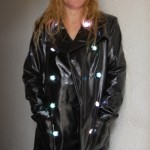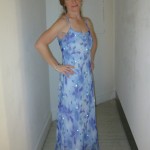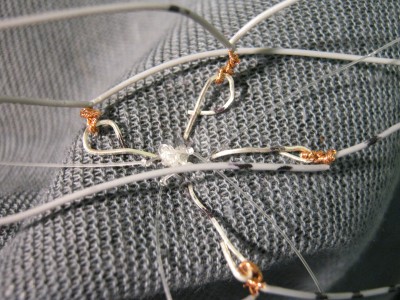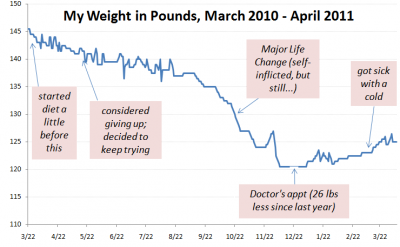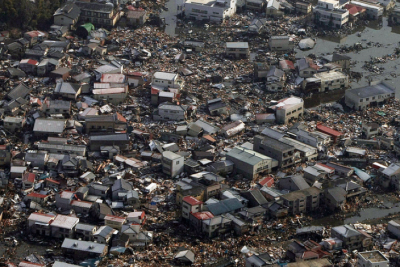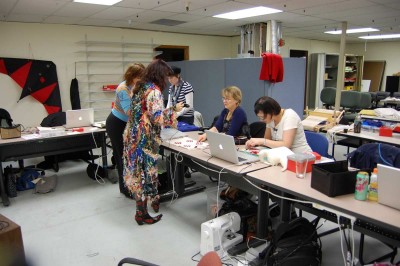I will be attending Maker Faire in San Mateo, CA this month and am excited to be a part of the eTextile and Wearable Computing Lounge and Showcase organized by the Textile Enchantress Lynne Bruning! I plan to have 3 items at the Lounge and will need to pick one for the Showcase. Each of these items share a common theme:
- the original garment was purchased at Goodwill
- it is lit up by individual LEDs
- telephone wire was used in the circuitry
Fiesta Flower Power
They say “beauty is the best defense against complexity”. Who needs brains when you have elegance and simplicity? Less can indeed be more! A coin cell battery powers 43 tiny 1.8mm white LEDs evenly dispersed on this blue floral print dress. No Arduino or LilyPad.
Rainbow Raincoat
This was my first project in wearable technology, completed in March 2011. Diffused 5mm RGB LEDs adorn each of the 10 buttons on this shiny black coat. Each LED is surrounded by crystal beads for accent and additional diffusing enjoyment. Controlled by an Arduino Duemilanove. A button lets you choose either color drift mode for the subtle approach, or switch to rainbow mode when you want to wow friends and complete strangers alike (and/or try out light painting…).
Smolder
Inspired by a dream, a Facebook conversation and a look, hot and cold compete for attention on a little black dress. Diffused 5mm RGB LEDs are set simply to glow ember-orange, but with the timing and intensity cleverly crafted to mimic the look and feel (well, maybe just the look) of a campfire’s glowing coals. Controlled by a LilyPad, making gratuitous use of the Arduino language’s random() function. NOTE: I’m still working on this one but hope to have a photo up in a few days! 🙂
For the Showcase I will either exhibit the Rainbow Raincoat or the Smolder dress.
- The Amazing Technicolor Raincoat – drifting color mode
- Fiesta Flower Power
